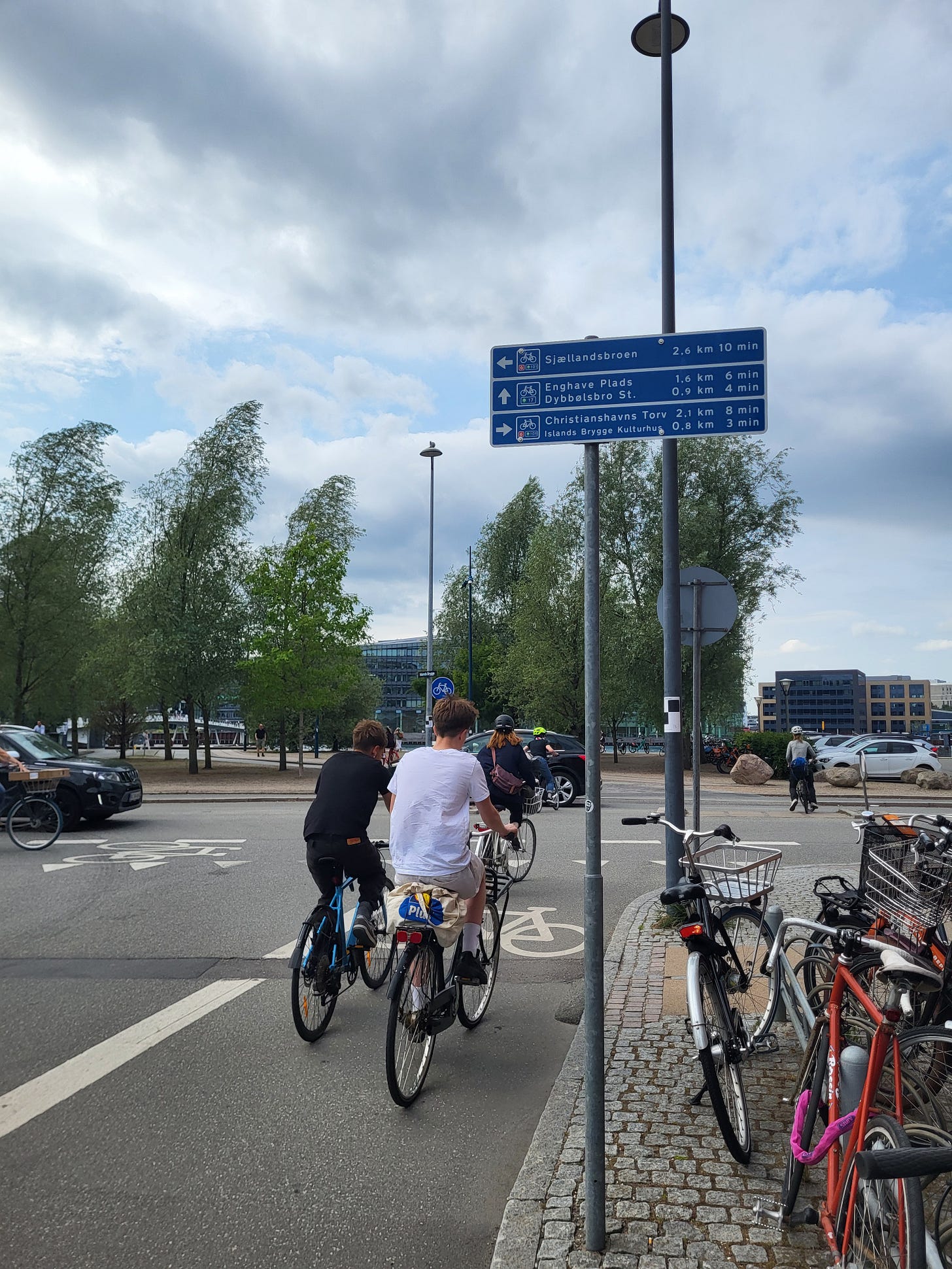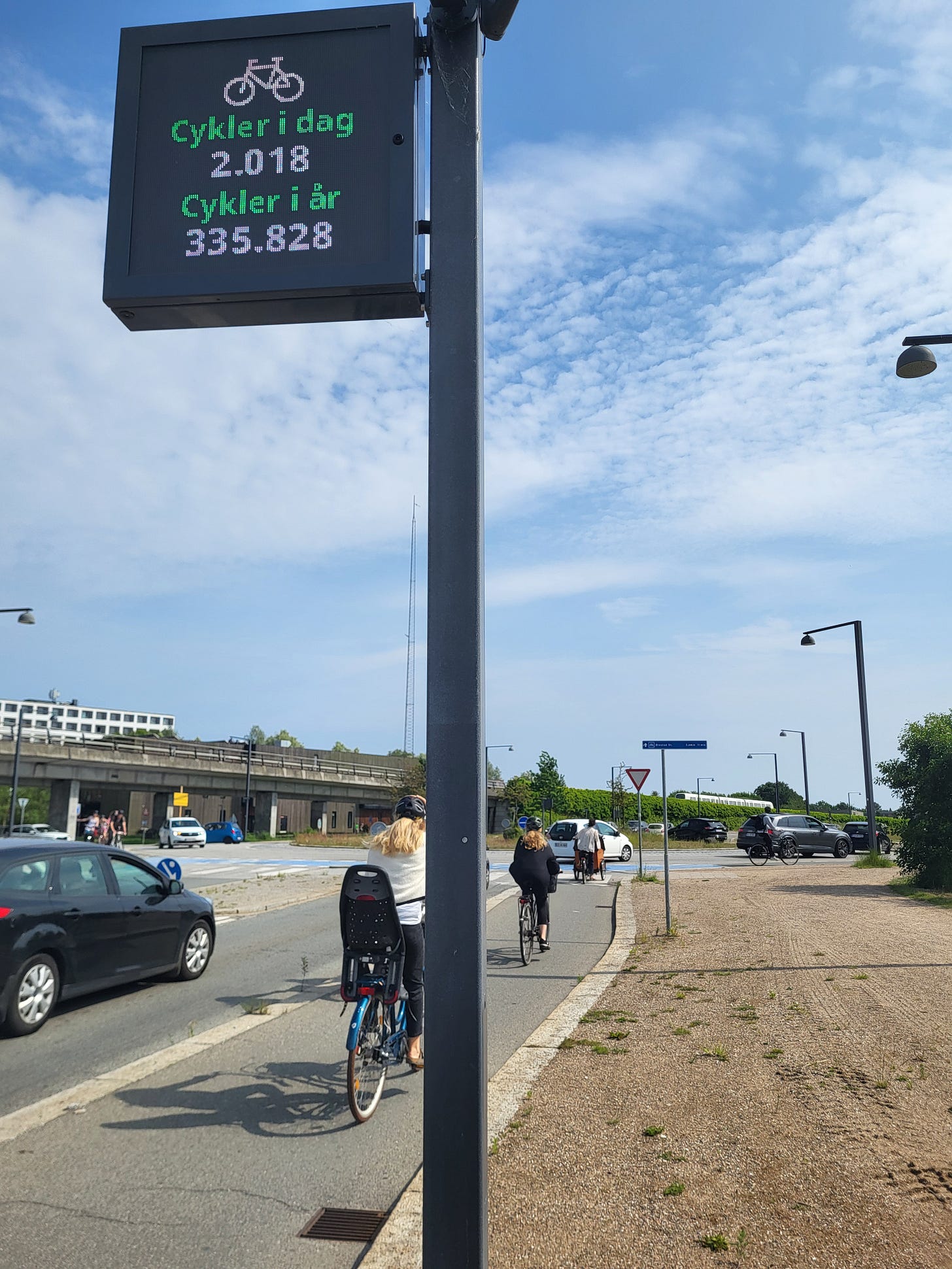It’s taken me a while to write this. I mean, it’s been a busy couple of weeks, but it’s also taken a bit to sink in that something I’ve devoted a lot of time making the case for is maybe, potentially, going to happen.
It’s been about three months since I first got wind that a national active travel network was in the planning here in England, but up until pretty much the week before its announcement it was by no means a sure thing. I almost cried when it finally got the green light. As you may know, a national network of cycle routes is an idea I’ve been quite invested in for some time.
I don’t want to make this about me, well too late I guess, and my social post taking credit for the idea was mostly tongue in cheek - hundreds worked on the original back in the 1980s, 90s, and 00s, it was 100% their idea and hard graft - but one last point. Last year I had a book out, about the existing charity-run National Cycle Network (NCN), its history and its future. Potholes and Pavements, which this Substack is named after, also sets out a manifesto for the future of a UK-wide, government-led, properly funded NCN. The idea was that it becomes something that’s treated like a national piece of infrastructure, and not just a random series of disconnected leisure routes. The previous Secretary of State for Transport, Louise Haigh, liked the book so much we went on a bike ride to discuss it, and she pledged unprecedented funding and support for cycling and walking. It was all quite surreal.
The vision was, a proper network would connect towns with villages, cities with suburbs and, yes, head out to the countryside, the hamlets and beyond. As well as work and shopping trips it would serve tourism and leisure journeys, which are incredibly important to our economy and wellbeing. The network, as I envisioned it, would go right across city centres, and then out the other sides. Acting as a kind of A-road network, it would connect to local networks, the cycle route equivalent of B-roads and minor roads using things like traffic-calmed neighbourhoods and quiet rural lanes that aren’t all rat runs for drivers. Then wherever you would want or need to cycle to, you could. Simple, really.
The tricky part is, of course, delivery. At its launch in York earlier this month head of Active Travel England, Chris Boardman, described the ‘cycling, walking and wheeling network’ to me as a ‘national plan, designed locally’. 12 English mayors will plan and build it, starting with urban areas and hopefully spreading out (active travel targets are very much urban, still).
All but one English mayor signed up to deliver it, including one Reform candidate, apparently press-ganged into it. One of the other mayors, it is rumoured, stood over him and said, ‘just sign it’ – and he did. London will support it, but because of how it’s run, the capital already has its own major route network.
There’s no new funding, is the major caveat. There’s no network planned yet, either, no targets. The 3,500 miles announced were already planned, some are already being delivered – it’s a case of adding them up and saying, this is the start. Which is valid, it just isn’t the network, or even a network. What mayors do have, thanks to devolution, are a lot of different funds to draw on to deliver – albeit funds that are hotly contested, not least for other pricier infrastructure like trams and bringing bus networks back under city control.
What needs to follow is a period of honesty about the current infrastructure. That means mayors admitting that actually, those painted narrow lanes on main roads, those dirt paths through unlit parks, the bollards and steps, aren’t going to cut it. Once a baseline is established, it’s a case of prioritizing improvement and expansion, and funding delivery.
I was in Copenhagen recently, on a holiday tacked on to a work trip. It’s an expensive place so I stayed in a pod hotel, a box with a comfy bed inside, and in my excitement got up at 05:30 to explore the city’s interurban cycle superhighways. Holidays with me are pretty wild. Using dockless Donkey bikes I cycled about 50km of them, I reckon. Blue signs, the very ones that inspired our NCN signs, denote major bike routes right through the city and, the idea goes, you follow those ‘cycle superhighways’ out to your suburban destination, or further. Once the city is behind you many of these routes are on the verges of main roads; they aren’t things of beauty, or shade, but boy are they well-used. Even mid-afternoon on a weekday. In the city some routes go through nice parkland, they run past train stations, and city centres, they are generally but not universally well-signed – I still missed turnings – and reliably good quality.
Copenhagen’s city region network, planned by city and regional councils, became one of Denmark’s most profitable infrastructure investments in socio-economic terms, and I’m sure ours could be too. The biggest winner with cycle route investment is health, but there’s also access to jobs, education, healthcare, a social life – important stuff. And leisure and tourism, also important.
That, then, should be the vision for our locally-planned, national network. England’s Chief Medical Officer, Chris Whitty, attended the launch of the Network, and thanked everyone there, many of whom are local authority staff, for delivering a tool for mass health improvement. The best way to get people active, he said, is to build it into people’s lives, and that’s particularly powerful for those not already exercising or on the verge of ill health.
His warning was that the culture wars narrative could derail such a plan, and its health benefits. The solution, proposed by Active Travel England, is to focus first and foremost on safe routes for children. It’s hard, after all, to argue against kids being safe walking and cycling to school. It’s something South Yorkshire mayor, Oliver Coppard, and his team has focused on for a while.
It’s not just mayoral authorities who could join the network delivery, I’m told – but there will be an urban focus for now. That’s because Active Travel England’s targets are urban and, with limited funds, Boardman says, they can’t “jam spread” investment across England. Rural areas will have to be smarter, and could lose out. As Whitty said though, often it’s the rural areas, lacking even pavements, where it’s hardest to be active and where the 100m of road to a safe path could be the barrier to people getting active.
The fact this plan has got this far is testament to the hard work and collaboration of a lot of people. Its realization is a tantalizing prospect. It’s a long path though, between here and delivery. If they can keep on that path, without labouring the point too much, it could of course transform local transport, and no doubt tourism in the city regions, perhaps even the often-forgotten rural parts of those city regions, of which there are many. With six more mayoralties coming online next year, more regions could join network delivery, and then we’d be looking at a truly national network.







The mayors getting together for a national network designed locally sounds really promising. I really like your vision of the network in your book. As we don't have a mayor yet in Worcestershire, and as it is a mix of city, town and rural areas, with a reluctant council, I'm keen to see if we can start to follow the lead and do some imagining of this better future network based on examples elsewhere.
(My holidays also involve photographing obscure cycle path solutions, which I think is entirely sensible).
Progress, but slow. Thanks for all your effort keeping the wheels moving.
For me, the benefits of cycling/walking as a part of your daily life is the No.1 goal. The commute to & from work should be the top goal. Anything up to 12 miles each way can be easily achieved by the majority of individuals. Something so simple has multiple benefits:
Individual/family Financial savings
Significant health benefits, both physical and mental
NHS/GP savings
Reduced road congestion & pollution
Major environmental benefits